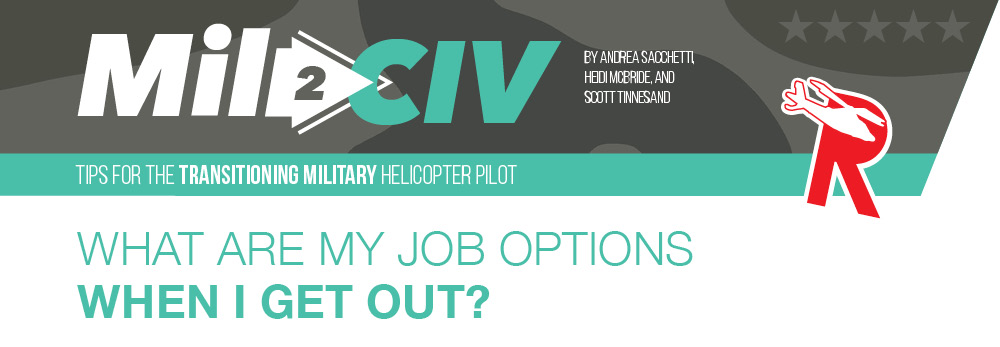|
Aug
09
2021
|
|
Posted 4 years 146 days ago ago by Admin
|
|

Some of the biggest questions military pilots ask when transitioning to the civilian pilot sector are: “What kind of flying jobs are out there for me?” “Which helicopter jobs am I qualified for?” “How much money will I make?” Plus many more questions. To find answers, we looked at our own niche in the helicopter industry and asked our friends in other flying jobs for the information to assemble an overview. The data includes flight hours required, rough starting wages, standard work schedule and other additional information. Just like the caveat you hear for any diet or exercise program: individual results may vary! Treat this information as a general guide. Starting wages, for example, vary widely based on location, type of aircraft, personal flying experience and much more. For more specific data, see the Mar/Apr 2021 issue of Rotorcraft Pro and its annual Pilot Salary & Benefits Survey.

Chart Assumptions & Notes:
Minimum pilot certification is Commercial Pilot Rotorcraft – Helicopter and Instrument Helicopter rating
All logged flight time is turbine engine time
Corporate PIC and all IFR Captain jobs require instrument time (75 simulator / 50 – 100 hours actual)
Firefighting requires mountain time experience (200 hours)
About the authors: Andrea Sacchetti is a retired U.S. Coast Guard pilot and is now a base lead pilot for REACH Air Medical Services in California; Heidi McBride was a helicopter crew chief in the U.S. Coast Guard and is now a VFR captain in the oil and gas industry; Scott Tinnesand was a U.S. Army pilot and now is an experimental test pilot with The Boeing Company. All three are co-chairs of the Mil2Civ Transition Course at HAI’s Heli-Expo.